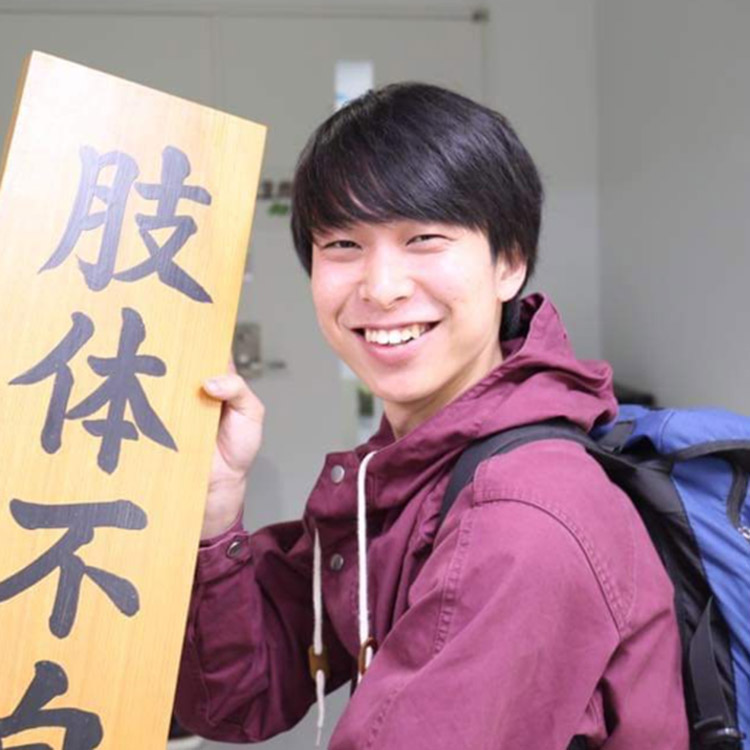
障害科学専攻
肢体不自由学分野
堀 雅隆
2020.06.04
大学院説明会
特設ウェブサイト
Multidisciplinary research for people with physical disabilities
in an environment opened to the university and beyond
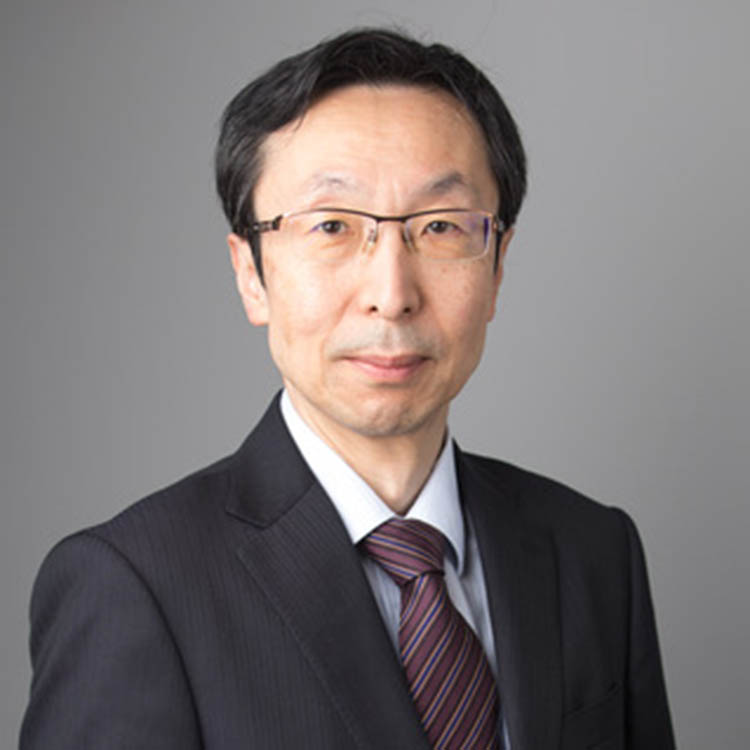
大きな枠組みとしては、身体性を基盤とする回復の原理を理解し新たなリハビリテーション治療を開発する研究、医療におけるコミュニケーションの機能と構造を明らかにして臨床と教育に応用する研究、そして医療機器や障害支援機器につながる医工連携研究の3つがあります。具体的には、脳卒中片麻痺の回復の基盤となる中枢神経系の可塑性に関する研究、障害者の身体意識の変容に関する研究、中枢神経系の可塑的変化を誘導する非侵襲的脳刺激(経頭蓋磁気刺激、経頭蓋直流電気刺激)に関する研究(写真1)、ニューロモジュレーションや筋力増強に用いる末梢神経刺激に特化した磁気刺激装置の開発(写真2)、3次元動作解析技術や筋電図などを用いた運動障害の理解(写真3)と治療用装具の開発、摂食嚥下の運動障害に関する研究、サルコペニアと嚥下障害関連肺炎に関する基礎および臨床研究、Patient-reported outcomeを用いた臨床研究、ロービジョンリハビリテーションに関する研究、患者中心のチーム医療に用いられるコーチング技術に関する研究(写真4)、災害被災者のレジリエンスに関する研究を行っています。
There are three major frameworks: research to develop new rehabilitation treatments by understanding the principles of physicality-based recovery, research to identify the function and structure of communication in medicine and apply it to clinical and educational applications, and medical-industrial research that leads to medical devices and disability assistive devices.
Specifically, we have conducted research on the plasticity of the central nervous system as a basis for recovery from stroke hemiplegia, the alteration of body consciousness in disabled people, non-invasive brain stimulation (transcranial magnetic stimulation and transcranial direct current electrical stimulation) to induce plastic changes in the central nervous system (Photo 1), the development of a magnetic stimulator specialized in peripheral nerve stimulation for neuromodulation and muscle strengthening (Photo 2), understanding of movement disorders using 3D motion analysis technology and electromyography (Photo 3) and development of therapeutic orthotics, movement disorders of feeding and swallowing, basic and clinical studies on sarcopenia and dysphagia-related pneumonia, clinical research utilizing patient-reported outcome, research on low vision rehabilitation, research on coaching techniques used in patient-centered team medicine (Photo 4), and research on resilience of disaster victims.
メンバーそれぞれが主体的に研究テーマを決め、それに真面目に取り組んでいます。医と工、日本と外国、様々な医療専門職など、多様な背景の学生が在籍し、他者を尊重し助け合う雰囲気があります。内部の風通しが良いだけではなく、他部局との共同研究、企業との共同研究、企業研究者の臨床現場観察の受け入れ、外国からの短期留学者の受け入れなど、外部に対して開かれた研究室です。現在の在籍学生は修士課程と博士課程を合わせて30名を超え、現在在籍している留学生の出身国は、中国、タイ、パキスタン、エクアドルです。教員の背景も、リハビリテーション医学、臨床疫学、教育心理学、呼吸器内科学、神経内科学、精神医学と多彩です。また、医師、理学療法士、作業療法士、福祉工学研究者などの非常勤講師も研究指導にあたっています。そのため研究領域は広範囲に及びますが、肢体不自由障害者のための研究という点で一貫しています。一つのことを多面的に捉えることによって、理解が深まるとともに、新しいものが生まれると考えています。
Each member decides on his or her own research theme and works diligently on it. Our students have various backgrounds such as medical or engineering, Japanese or foreign nationals, and various medical professionals, and there is an atmosphere of mutual respect and support.
Our department is not only open inside, but is also open to the outside through conducting joint research with other faculties and companies, accepting corporate researchers for clinical site observation, and accepting short-term students from abroad.
The number of current students in our department is more than 30 students in the master’s and PhD programs altogether, and the international students from China, Thailand, Pakistan, and Ecuador have joined our department. The backgrounds of the faculty members are also diverse, which cover rehabilitation medicine, clinical epidemiology, educational psychology, respiratory medicine, neurology, and psychiatry.
In addition, part-time instructors such as physicians, physiotherapists, occupational therapists, and welfare engineering researchers also provide research guidance.
As such, our research area is broad, but quite consistent in terms of research for people with physical disabilities. We believe that by looking at one thing from multiple perspectives, we can deepen our understanding and create something new.
大学院は、学部以上に主体的に行動することが求められます。大学院入学までに、自身の勉強のスタイルを確立していて欲しいと願っています。入学後は、学生同士や教員との積極的な対話を通して成長していくことでしょう。大学は学生のためにあります。東北大学の理念の一つである「研究第一主義」は、学生諸君が研究を通して学ぶ(教員の立場から言えば研究を通して教育する)ことだと理解しています。したがって、研究のために学生がいるのではなく、研究が学生の成長の手段、場合によっては就職や出世の手段であっても良いと考えています。それでも何かを探求する研究の面白さに気づいて研究し続ける学生に出会い、そのような修了生との交流が続いていることは、大学人として何よりの喜びです。
Graduate school requires students to be more independent than undergraduate students. We hope that you will have established your own style of study by the time you enter graduate school. Once you are enrolled in graduate school, you will grow through active dialogue with other students and faculty members. The university exists for the benefit of its students.
I understand that “Research first”, that is one of the philosophies of Tohoku University, means that students learn through research (in another word from the faculty’s point of view, we should educate students through research).
Therefore, I don’t believe that students are there for the sake of research, but rather that research can be a means for students to grow and, in some cases, to secure a job or a career. Nevertheless, it is my greatest pleasure as a professor at university to meet students who find the excitement of research and continue to pursue it, and to keep in touch with those who have completed their studies.
教育研究職、医療専門職としてのリーダー、企業就職など多様です。教育研究職では、教授、准教授などの指導者、医療専門職は病院組織の部門長などとして活躍しています。工学分野出身の留学生は、日本の上場企業等に就職して活躍しています。
There are a variety of positions available, including teaching and research positions, leaders as medical professionals, and corporate employment. In the education and research field, they work as professors, associate professors and other leaders, and in the medical profession, they work as heads of departments in hospitals. International students with engineering backgrounds are active in Japan’s listed companies, etc.
可能です。ただし、講義への出席や研究を行うためには、当然ですが職場の理解を得る必要があります。東北大学病院のリハビリテーション部で働きながら大学院で学んでいる学生もいます。
It is possible. However, in order to attend lectures and conduct research, you must, of course, gain the understanding of your workplace. Some students are studying at the graduate school while working in the rehabilitation department of Tohoku University Hospital.
研究環境が整っており、一流の研究者が周囲に沢山いて、求めれば喜んで教えてくれるところです。また、産学連携が進んでおり、研究成果の社会実装が比較的容易であるところも強みであると考えます。仙台は住みやすい街です。キャンパスの近くに住んで研究を行い、街の生活を享受しながら自然を近くに感じることができます。
The research environment is well-developed, and there are many top-notch researchers around, who are willing to teach you if you ask for help. Another advantage of Tohoku University is that it is relatively easy to implement the results of research into society, as industry-university cooperation is very active. Sendai is a very comfortable city to live in. You can live and work near the campus and enjoy the city life while being close to nature.
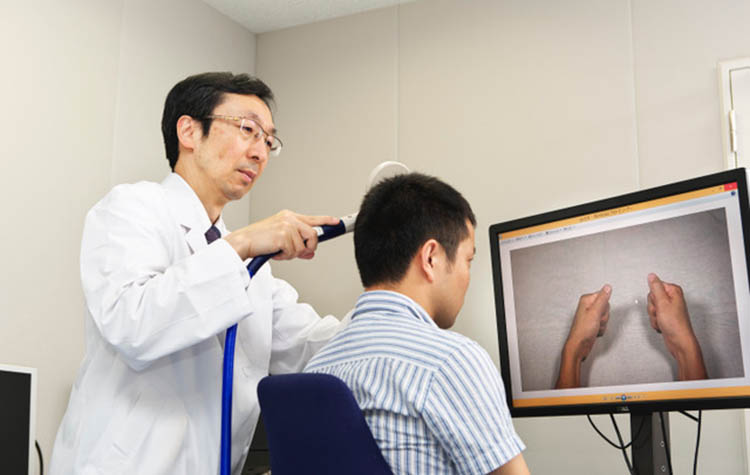 1. 運動観察と組み合わせた経頭蓋磁気刺激の実験風景
1. 運動観察と組み合わせた経頭蓋磁気刺激の実験風景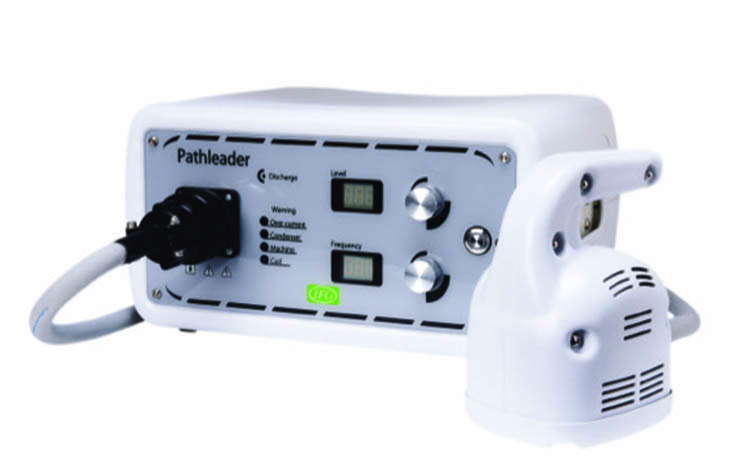 2. 新規に開発した末梢神経磁気刺激装置
2. 新規に開発した末梢神経磁気刺激装置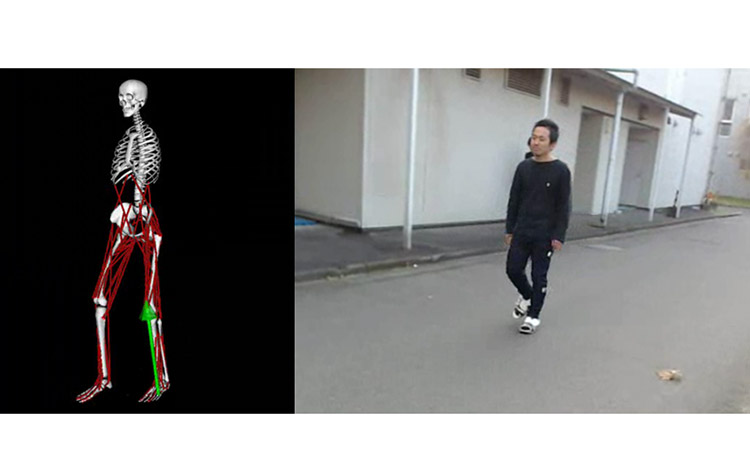 3. 新規に開発した装置による屋外での動作解析
3. 新規に開発した装置による屋外での動作解析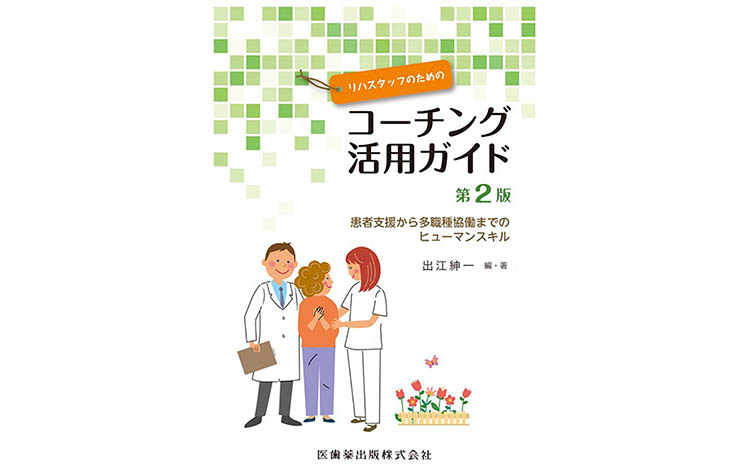 4. 『リハスタッフのためのコーチング活用ガイド 第2版』表紙
4. 『リハスタッフのためのコーチング活用ガイド 第2版』表紙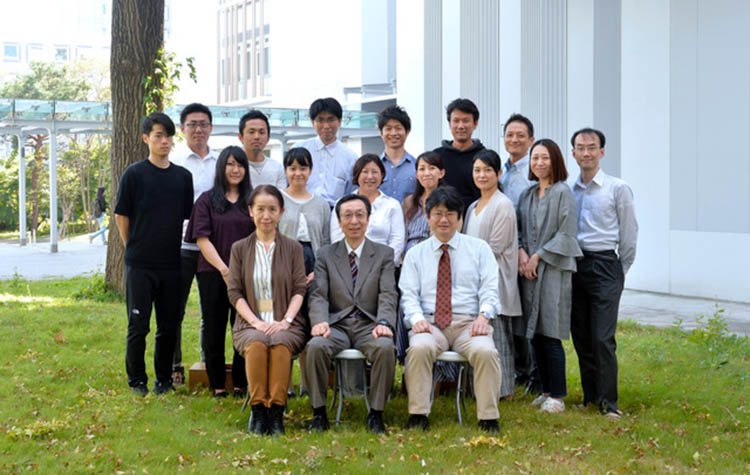 5. 研究室メンバーと
5. 研究室メンバーとよく「何故リハビリテーション科を選んだのか」と聞かれます。何故という質問に答えるのは難しいですし、「答えは一つじゃない」とテレビのCMでも言っています。大学生時代を思い出すと、医学部5年生の1981年が国際障害者年で、この頃に『Medicina』という雑誌に特集された「リハビリテーション」という言葉に目がとまりました。そういえば、入学した年の春に慶應義塾大学医学部新聞に「月が瀬リハビリテーションセンター開設」と一面トップに掲載されていたことも思い出します。ちなみに1983年から1992年までが国連・障害者の十年でした。というわけで希望をもってリハビリテーション医学を選びましたが、学問としては未だ発展段階で、何を勉強して良いかも分らず自信を持つことができませんでした。転機は研修医1年目の終わりに出会った先輩医師の指導でした。自由な議論を許し、研修医の誉めるべきところは徹底して誉め、沢山の仕事を与えてくれました。以来、人の能力は相手によって変わる、言い換えると、相手の能力は自分のありかた次第であるということを、教育でも診療でも忘れないようにしています。
I'm often asked why I chose rehabilitation. It's difficult to answer the question why, as the TV commercials say that "There's more than one answer”. When I think back to my time in university, 1981, when I was in my fifth year of medical school, was the International Year of Disability, and it was around this time that the word "rehabilitation" was featured in a magazine called Medicina that caught my eyes. I also recall that in the spring of the year I entered the School of Medicine, the newspaper of Keio University had a front-page article on the establishment of the "Tsukigase Rehabilitation Center". Incidentally, the period from 1983 to 1992 was the United Nations Decade for Persons with Disabilities. Therefore, I chose rehabilitation medicine with high hopes. However, as an academic discipline, it was still under development and I did not know what to study and could not have confidence in myself.
The turning point in my career was the guidance of a senior doctor I met at the end of my first year of clinical resident. He allowed
Since then, I have been trying to remember in both my education and medical practice that a person's abilities are influenced by how the other person communicate; in other words, the other person's abilities depend on the way I am.
肢体不自由学分野(Department of Physical Medicine and Rehabilitation )
連絡先:ホームページの「お問い合わせ」からご連絡ください。(Please contact us from the URL below.)
横浜市出身、慶應義塾大学医学部卒業後直ちにリハビリテーション医学の修練を開始、リハビリテーション科専門医となり、東海大学医学部リハビリテーション学准教授を経て、2002年から現職(大学病院肢体不自由リハビリテーション科長兼務)。2008年日本初の医工融合教育研究を行う医工学研究科の創設時より同研究科リハビリテーション医工学分野を兼務担当、2016年から3年間医工学研究科長。研究室は6号館4階。
He was born in Yokohama city. After graduation from Keio University school of medicine, he soon started learning in rehabilitation medicine, and became a specialist of rehabilitation doctor. He served as an associated professor of the department of rehabilitation at Tokai University graduate school of medicine before assuming his current position in 2002 (also head of the department of rehabilitation for physical medicine and rehabilitation at the University Hospital). He has concurrently been in charge of the Department of Rehabilitation Biomedical Engineering at the Graduate School of Biomedical Engineering since its inception in 2008, when it was the first school in Japan to conduct integrated medical engineering education and research, and has been the Dean of the Graduate School of Biomedical Engineering for three years since 2016. His laboratory is located on the 4th floor of Building 6.